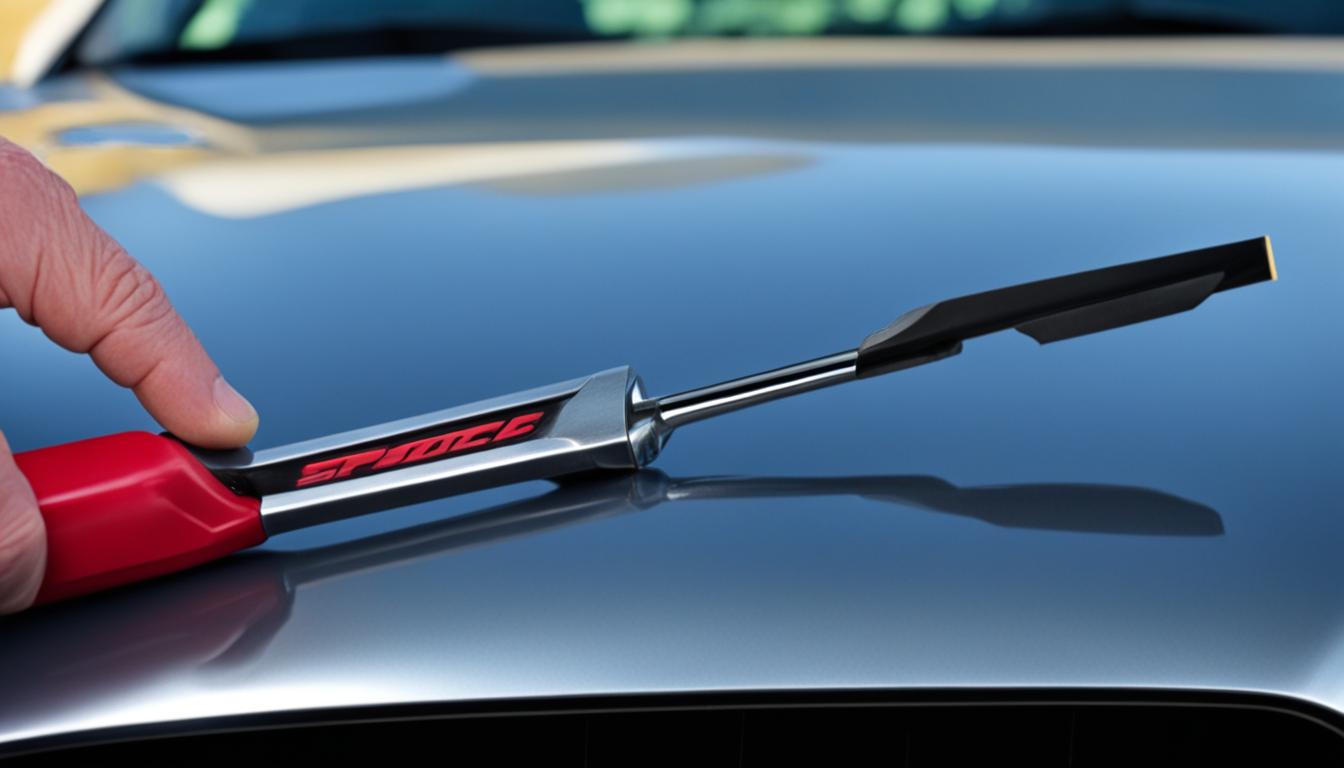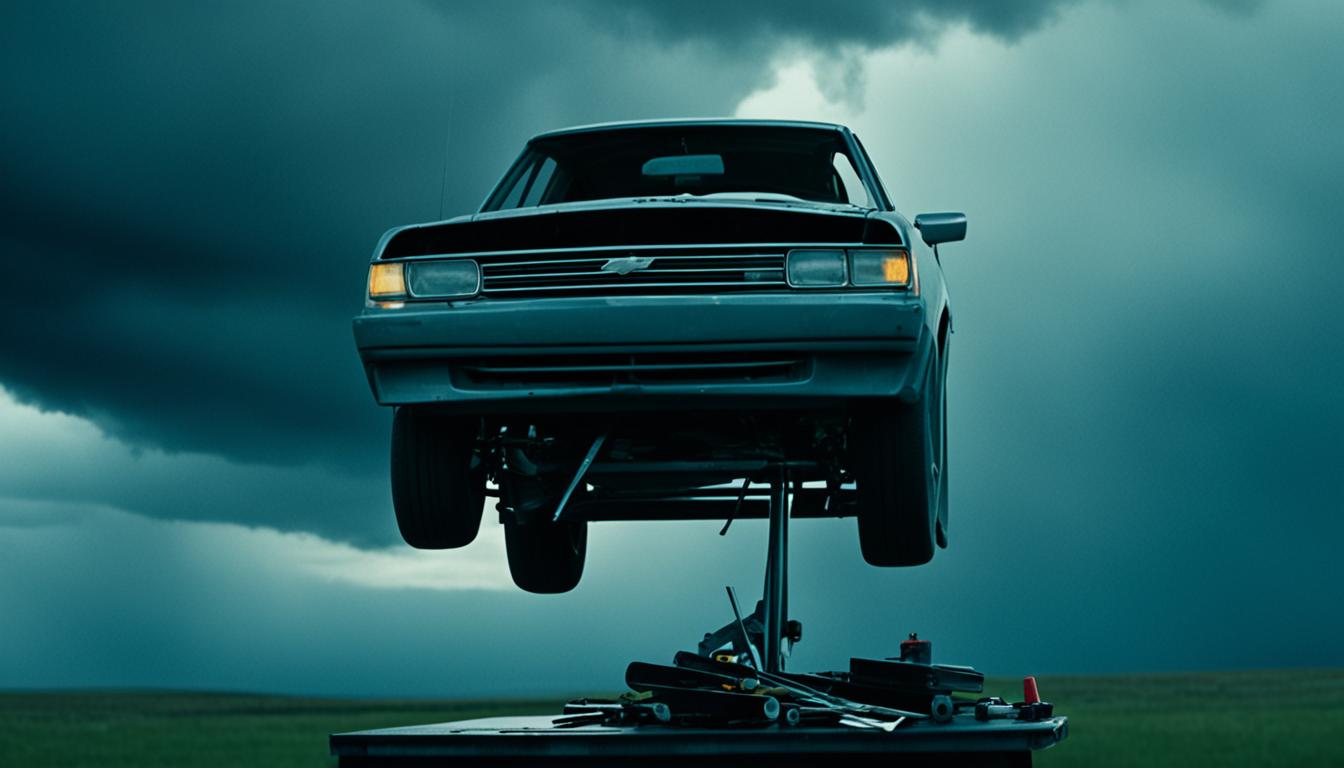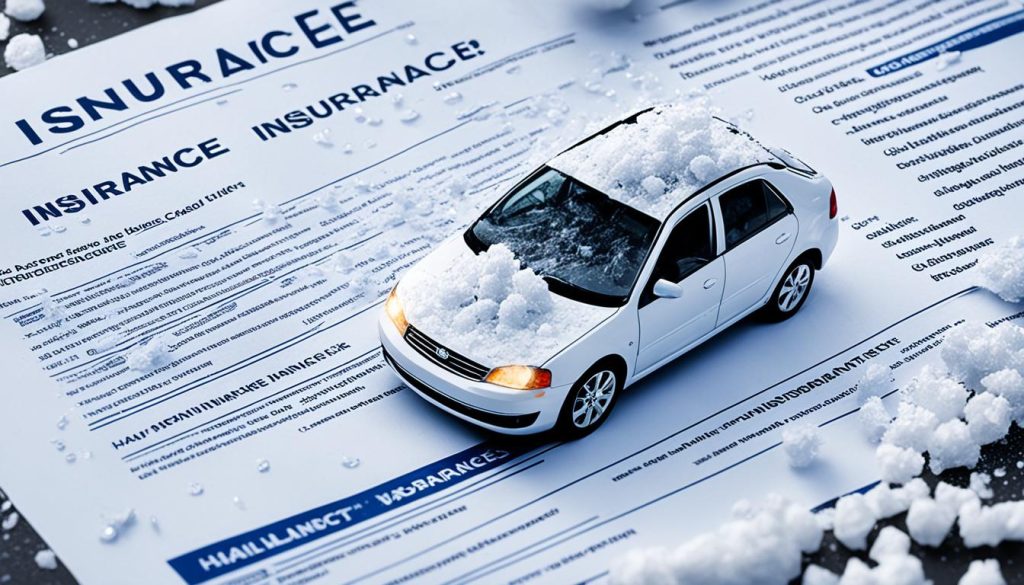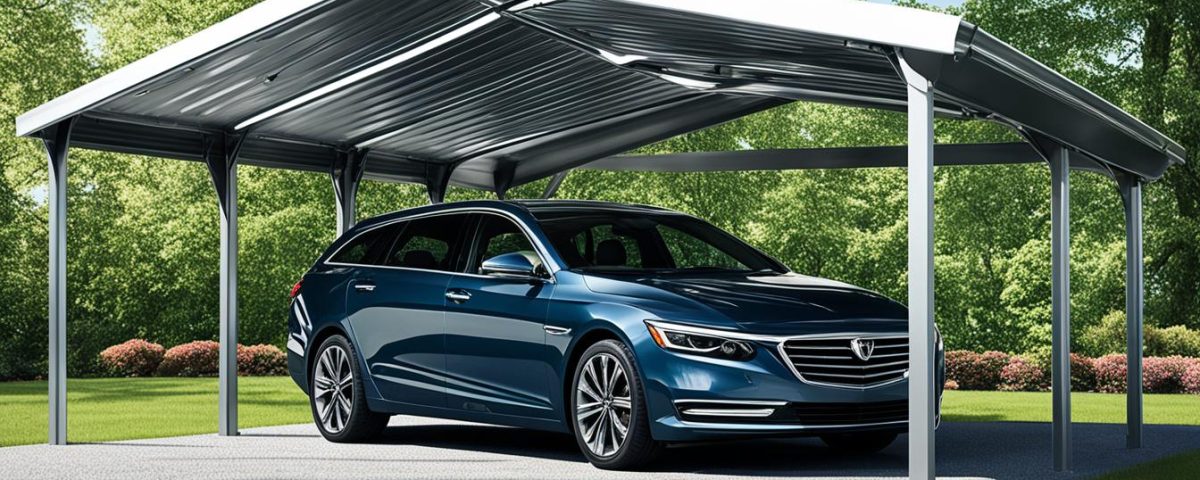
Everything You Need to Know About Dent Repair

Frame Damage: How to Know If Your Car Is Safe to Drive
Hailstorms are a real threat to vehicles. They can cause a lot of damage, needing costly repairs. It’s wise to protect your vehicle from hail damage. And if your car does get hit, knowing the repair options is handy.
Bad weather like hailstorms can surprise us. But, we can reduce vehicle damage risks by taking precautions. This helps avoid spending a lot on repairs and the stress that comes with it.
Key Takeaways:
- Protecting your vehicle from hail damage can save you from costly repairs and insurance claims.
- Preventive measures are essential to minimize the impact of severe weather conditions on your car.
- Understanding repair options is crucial for efficient and timely restoration of hail-damaged vehicles.
- By taking preventive steps and being prepared, you can ensure your vehicle remains protected during hailstorms.
- Stay informed about weather forecasts and seek shelter in a covered area during hailstorms to avoid potential damage.
What is Hail Damage on a Car?
Hail damage is what happens to a car when hailstones hit it. It can make dents, chip the paint, and break windows. The damage level depends on the hailstone size, speed, and angle of the impact.
Even small hailstones can dent a car’s roof and hood. Larger hailstones can cause a lot more harm. They might create many dents, paint chips, and broken windows on the car.
Dealing with hail damage quickly is always best. Small dents or scratches can lead to rust, which weakens the car. Broken windows must be fixed fast to keep the car’s riders safe.
Recognizing Hail Damage
Spotting hail damage early is key to getting it fixed. After a storm, look for these signs on your car:
- Dents or depressions on the car’s exterior, particularly on the roof, hood, and trunk
- Chipped or peeling paint
- Cracked or shattered windows
- Indentations on moldings or trim
- Noticeable marks or scratches on the vehicle’s surface
Seeing any of these means you should get a professional’s opinion and a repair cost.
Next, we’ll talk about how to protect your car from hail damage. This will help keep your car safe during bad weather.
How to Prevent Hail Damage to Your Car
Preventing hail damage is key to keep your car looking good and avoid costly fixes. There are steps you can take to shield your vehicle from hail.
Keep your car in a garage or under a shelter to be safe from hail. This keeps hailstones from hitting your car directly. If you can’t find covered parking, there are other tips to try.
Moving blankets are a smart and affordable choice. Drape them over your car to dampen the impact of hail. This reduces the chance of getting dents or scratches.
Consider getting a car cover that’s tough enough to handle hail. These covers are strong and shield your car from hail hits. Putting on a car cover adds another layer of defense.
There are also mobile storm guards and inflatable car covers. They’re easy to use and keep hail away. They offer protection on the go for your vehicle.
Always ready for hail and use preventive methods to avoid damage. Look into these ideas to pick the best one for your car’s safety.
Image:

Repairing Hail Damage to Cars
When hail hits a car, there are many ways to fix it. For small dents and scratches, paintless dent repair, or PDR, is a top choice. This method works by gently pushing out the dent from the inside, keeping the car’s paint job intact.
Choosing PDR keeps your car looking good and its value high. The original paint stays untouched, making the repair invisible. This method works well for small to medium-sized dents and scratches.
For more serious damage, like big dents or smashed windows, you might need regular fixes. These include just what you’d think: replacing or fixing dented parts and painting them over. This ensures your car is not just pretty but also safe to drive.
The price of fixing hail damage changes based on how bad it is. Small touch-ups cost less than big repairs. A trustworthy auto shop can tell you exactly what your car needs and how much it will cost.
Getting your car fixed fast stops more problems and keeps its value up. Fixing hail damage quickly is important. It prevents rust and bigger, more expensive problems down the road.
Does Car Insurance Cover Hail Damage?
It’s key to know if your car insurance covers hail damage. Most policies do, especially comprehensive coverage. This means your insurance will pay for repairs if hail damages your car. Yet, make sure to check your policy for the extent of coverage and any deductible.
Before you claim hail damage, think about repair costs and your deductible. The deductible is what you pay before insurance helps. If repair costs are less than your deductible, think if it’s better to pay them yourself. This keeps your insurance rates from going up.
If filing a claim seems right, contact your insurance right away. They’ll tell you what to do and what they need from you. Share info and photos of the damage to make the claim process smoother.

Knowing your policy and the right steps to claim can help a lot. Check your policy and talk to your insurer sometimes to stay informed. This way, you can manage hail damage costs well.
Protecting Your Roof from Hail Damage
Hailstorms can harm roofs badly, causing leaks and other issues. Protecting your home can avoid expensive repairs. Here are strategies to help:
1. Install Impact-Resistant Roof Shingles
Installing special roof shingles can lessen hail damage. These shingles can take hailstone hits without breaking. They’re made from strong materials like asphalt, metal, or synthetic rubber. This gives your roof added shield.
2. Reinforce Your Roof with Additional Materials
Adding more materials to your roof can stop hail damage. Think about putting a layer of plywood or extra sheathing. This makes your roof tougher. It helps your roof take hits without leaking.
3. Trim Trees and Bushes
Trimming trees and bushes near your house is smart. It keeps big hail from directly hitting your roof. Also, it lowers the chance of wind blowing branches onto your roof. This can save you from roof damage.
Keeping your roof safe is key to your home lasting a long time. Use these tips to fight the damage hailstorms can cause. They help you avoid high repair costs by preparing your roof.
Conclusion
Taking steps to avoid hail damage is key to protect your car and home. Use covered parking or storm protectors to keep your vehicle safe. These efforts help keep away costly repairs.
If hail damage does happen, act quickly to see how bad it is. For small dents, paintless dent repair is a good choice. But, big repairs like broken windows might need traditional methods.
Your roof is also crucial. Make it stronger with materials that can resist impacts. Keeping trees low can stop hailstones from heavily hitting your roof.
Overall, dodge hail damage by being proactive and fixing issues fast. This protects your car and house, keeping them safe and in good shape.



